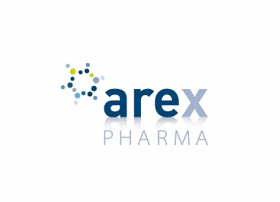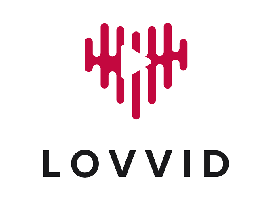What is an MVP project and what needs to be considered?
– A guide. –
The aim of an MVP (Minimum Viable Product) is to develop a product with the most necessary functions with little effort in order to test the market and collect valuable user feedback. MVP projects are particularly popular in software development as they help to save time and costs and test the basic marketability of a product at an early stage. In this article, you will learn about the benefits of an MVP, how the development process works and what points need to be considered.

Content
1. definition and goal of an MVP
The Minimum Viable Product is the first version of a product with the minimum functions required to demonstrate its value to users and gather feedback as quickly as possible. Eric Ries, the founder of the lean startup method, coined the term and describes an MVP as a prototype that is created in the shortest possible time and with as little effort as possible. An MVP lays the foundation for finding out whether a product meets market requirements before investing large resources in full development.
The core objectives of an MVP project are:
- Market tests and validation: Is the product marketable and is there demand for it?
- Fast feedback: User feedback at an early stage makes it possible to adapt the product to their needs.
- Conservation of resources: Costs and development time are reduced by focusing on core functions.
2 The advantages of an MVP project
An MVP project offers several advantages that are particularly important for start-ups and companies that want to bring new ideas to market quickly.
Cost efficiency
As only the most important functions are developed, the company saves considerable development and personnel costs. Early testing means that unnecessary investments in functions that are not required can be avoided.
Risk minimization
An MVP makes it possible to test market demand and customer interest with a small budget. This allows companies to determine whether a product idea has potential before investing larger sums.
Fast market entry
An MVP accelerates the development process, as the product is brought to market as early as possible. Speed is a competitive advantage in many industries.
Customizability through user feedback
By obtaining user feedback, the product is continuously optimized and adapted to the actual needs of the target group.
3. steps to successful MVP development
To successfully launch an MVP project, there are a few steps to follow:
- Identify target group and problem
The first step is to clearly define the target group and the problem that the product is intended to solve. Without a deep understanding of the customer’s needs, the MVP cannot be designed effectively. - Define core functions
In an MVP, only the functions that bring the greatest benefit to users are implemented. Functions that do not directly contribute to solving the core problem are initially omitted. - Creating a prototype
A prototype shows the basic idea of the product and helps with visualization. Depending on the project, this can be a simple sketch, a mockup or a first version of the software. - Development of the MVP
The product is now developed, focusing exclusively on the essential functions. This step requires efficient project management and agile development methods. - Launch and feedback
As soon as the MVP is ready, it is launched on the market and the data collection and user survey phase begins. The aim is to collect as much feedback as possible about user behavior and product usage. - Iterate and improve
The product is developed further based on the feedback collected. This step is crucial as it ensures that the product meets customer requirements.
4. important factors and pitfalls
Although MVP projects offer many benefits, there are some challenges and risks that need to be considered:
Misunderstandings in the target group analysis
If the needs of the target group have not been properly understood, the MVP cannot fulfill its function and will hardly be successful. A thorough market analysis is therefore essential beforehand.
Neglect of quality
Although it is a minimal version, quality should not be neglected. An MVP should be simple, but still be stable and user-friendly.
Loss of focus
Companies tend to want to add too many features during development. An MVP requires discipline to follow the original plan and only implement the essential features.
5 When does an MVP project make sense?
An MVP project is particularly suitable in situations in which a product idea is still untested or the risk of failure is to be minimized. An MVP project is a particularly good choice in the following cases:
- New business ideas: An MVP can help to test an idea without much effort.
- Market uncertainty: When it is unclear whether the market for a product exists.
- Limited resources: An MVP requires less time and budget and is therefore well suited for projects with limited resources.
- Extension of existing products: Companies can test new features as MVPs before fully integrating them.
6 The role of feedback and iteration
The iterative approach is an essential component of a successful MVP project. After the product has been launched on the market, a phase of collecting and analyzing feedback begins, which is used to continuously improve the product. The feedback provides crucial information on which functions need to be added or adapted and which may be superfluous. These iterations should continue until the product meets the requirements and wishes of the customers.
A typical feedback and iteration cycle in the MVP process comprises the following steps:
- Collect feedback
- Analysis and prioritization of improvements
- Implementation of the optimizations
- Renewed market test and further adjustments
7. summary and support from BITS
An MVP project is an efficient method of bringing a product to market that demonstrates the core benefits and generates early feedback. Companies can save resources and minimize market risk with this approach. Iterative further development based on user feedback ensures that the product ultimately meets the needs of the target group and can establish itself successfully on the market.
If you are planning an MVP project or need support with its implementation, the team of experts at BITS GmbH is at your side. Our experienced consultants and developers provide you with comprehensive support – from the definition of requirements to the development and market launch of your MVP. Take advantage of our knowledge and experience to make your product a success. Contact us for personal advice and support with your MVP project!
GET IN TOUCH WITH US
“We are happy to support you with the conception or implementation of your MVP. We look forward to hearing from you.”
Marc Schallehn, Managing Director BITS GmbH
Email: [email protected]
Phone: +49 (0)89 121 585 50

Gerne unterstützen wir Sie bei Ihren IT Projekten. Ich freue mich über Ihre Kontaktaufnahme.
OUR CUSTOMERS AND PARTNERS
OUR CUSTOMERS AND PARTNERS
Gemeinsam, zuverlässig und langfristig wollen wir als IT-Dienstleister Sie bei Ihren IT-Vorhaben unterstützen. Eine Auswahl unserer Kunden, Partner sowie Branchen finden Sie in diesem Abschnitt.













































